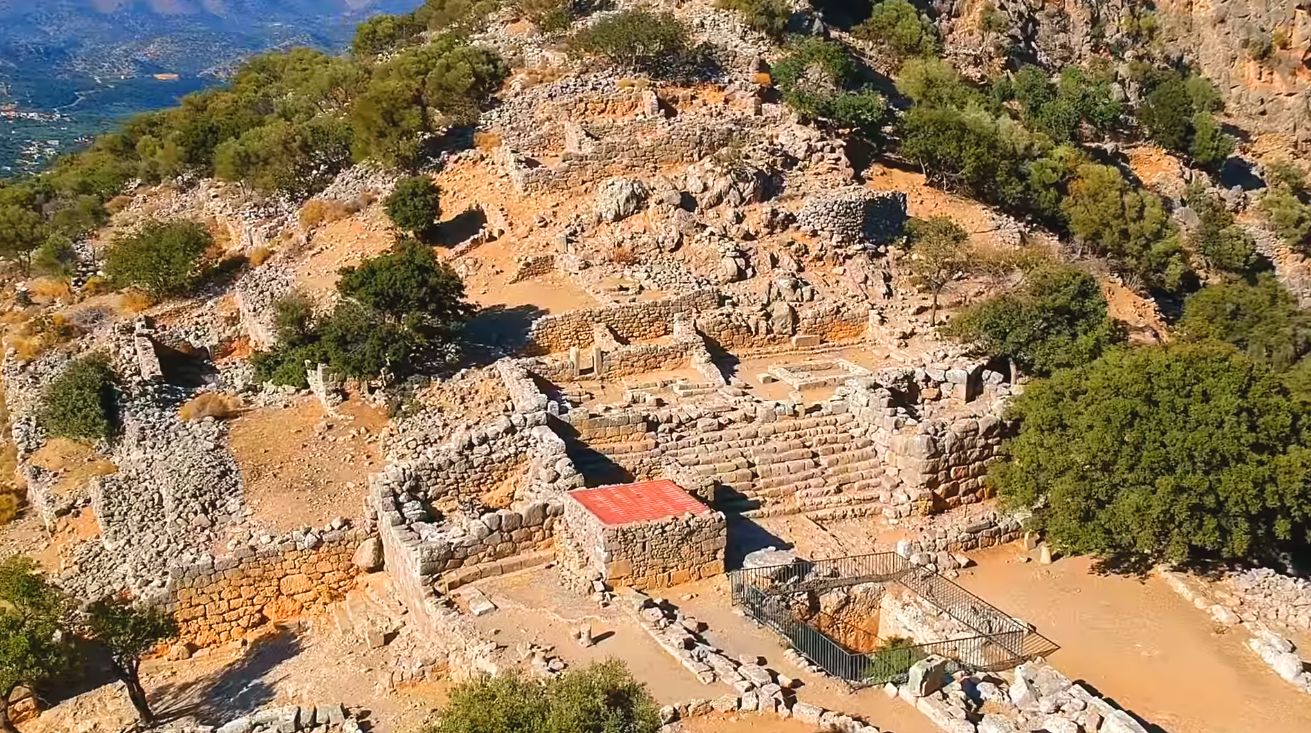Crete, the largest of the Greek islands, is a treasure trove of ancient ruins, echoing tales of civilizations that have long since faded into the annals of history. While many visitors flock to the well-known archaeological sites such as Knossos and Phaistos, the island offers a plethora of lesser-known ancient ruins that lie off the beaten path. Exploring these hidden gems provides a unique and intimate glimpse into Crete’s rich and diverse past, away from the crowds and tourist trails.
The Allure of Hidden Ruins
The allure of exploring ancient ruins off the beaten path lies in the sense of discovery and connection with the past. These sites, often nestled in remote and picturesque locations, offer a tranquil and reflective experience. They are untouched by the commercialism that often accompanies more famous sites, allowing visitors to imagine themselves as the first to uncover these ancient secrets.
Ancient Eleutherna
One of the most fascinating off-the-beaten-path sites is the ancient city of Eleutherna. Located near the modern village of Eleutherna, about 25 kilometers southeast of Rethymno, this site offers a comprehensive look at Cretan history from the Geometric period through the Hellenistic and Roman eras. The city was strategically situated on a hill, providing natural defenses and stunning views of the surrounding landscape.
Archaeological excavations at Eleutherna have revealed a wealth of artifacts, including impressive burial sites, intricate mosaics, and the remains of public buildings and private homes. The site’s museum, opened in 2016, showcases these discoveries and provides valuable context for understanding the city’s historical significance. Exploring Eleutherna offers a deep dive into the everyday lives of ancient Cretans, far from the bustling centers of Knossos and Phaistos.
The Ancient City of Lato
Tucked away in the hills near the town of Kritsa, in eastern Crete, lies the ancient city of Lato. This Dorian city-state, dating back to the 7th century BCE, is one of the best-preserved ancient sites on the island. Named after the goddess Leto, the city was strategically built between two peaks, offering breathtaking views of the Mirabello Bay.
Lato’s well-preserved ruins include the agora (public square), prytaneion (town hall), and various temples and houses, providing a vivid picture of civic life in ancient Crete. The site is particularly striking for its dramatic location and the peaceful, untouched environment. Visitors to Lato can wander among the ruins, often in solitude, experiencing the serene beauty and historical depth of this remarkable site.
The Ancient City of Aptera
Another hidden gem is the ancient city of Aptera, situated near Souda Bay in western Crete. Aptera, meaning “wingless,” was a major city-state during the Classical and Hellenistic periods and remained significant into the Roman and Byzantine eras. The site’s strategic location on a hilltop provided it with commanding views over the bay and the surrounding plains.
Aptera boasts an impressive array of ruins, including a Roman theater, large cisterns, temples, and an early Christian basilica. The city’s extensive fortifications, some of which date back to the Hellenistic period, are particularly noteworthy. Exploring Aptera allows visitors to appreciate the city’s strategic importance and its role in the broader history of Crete.
Vathypetro: A Glimpse into Minoan Life
For those interested in the Minoan civilization, the archaeological site of Vathypetro offers a fascinating glimpse into ancient agrarian life. Located near the village of Archanes, south of Heraklion, Vathypetro is home to a well-preserved Minoan villa, dating back to the 16th century BCE. The site includes a wine press, olive press, and various other agricultural facilities, highlighting the importance of these industries in Minoan society.
Unlike the grand palaces of Knossos and Phaistos, Vathypetro provides insight into the daily lives of Minoan farmers and their innovative agricultural practices. The site’s remote location and peaceful surroundings make it an ideal spot for contemplation and a deeper understanding of Minoan culture.
Exploring Beyond the Crowds
Exploring these off-the-beaten-path ruins requires a bit of adventure and curiosity. Many of these sites are not as easily accessible as the major tourist attractions, often requiring a car and a willingness to navigate Crete’s rural roads. However, the effort is well worth it for those seeking a more intimate and authentic experience of the island’s ancient past.
In addition to the well-known ruins, many lesser-known sites dot the Cretan landscape, from small rural sanctuaries to isolated hilltop fortresses. Each of these sites offers its own unique story and insights into the island’s complex history. Engaging with local guides or joining specialized archaeological tours can enhance the experience, providing expert knowledge and revealing hidden details that might otherwise go unnoticed.
Conclusion
Crete’s ancient ruins off the beaten path offer a rich and rewarding exploration of the island’s diverse history. From the well-preserved city of Lato to the agrarian complex of Vathypetro, these sites provide a unique window into the past, away from the hustle and bustle of more popular tourist destinations. By venturing off the beaten path, visitors can connect more deeply with Crete’s heritage, discovering the timeless stories etched into its landscapes and ruins. Whether you are an avid history enthusiast or simply a curious traveler, the hidden ancient sites of Crete promise an unforgettable journey into the heart of one of the Mediterranean’s most storied islands.


